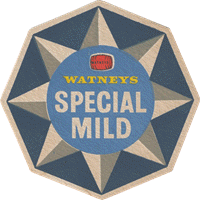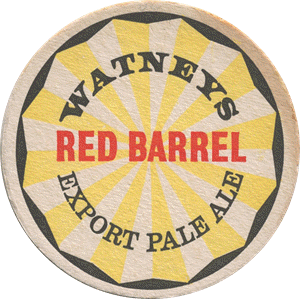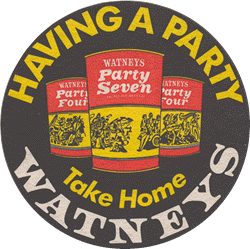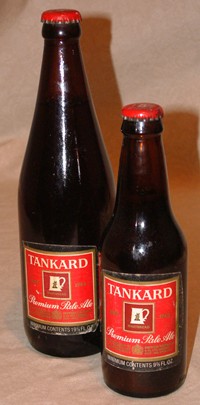
Lager was the drink of the 70s. The hot summer of 1976 provided a reason to try the beverage, but tastes were changing. In 1971 there was a backlash against the relentless spread of keg bitter and lager when CAMRA, the Campaign for Real Ale, formed. In the latter part of the seventies there was a resurgence of some traditional brews; real ale, though, still remained a minority taste.
 Mild was the working man's drink for the first half of the twentieth century. The only choice was between mild and stout; bitter was a luxury. In 1900 best bitter was almost unknown and in 1929 it was still only a tiny fraction total beer sales.
Mild was the working man's drink for the first half of the twentieth century. The only choice was between mild and stout; bitter was a luxury. In 1900 best bitter was almost unknown and in 1929 it was still only a tiny fraction total beer sales.
At the start of the sixties, mild was the dominant beer. Around 40% of the output of Bass Charrington, Britain's largest brewer, was mild. By 1967 this had fallen to 30%. Mild was losing favour, though it was the cheapest beer. It did have strongholds in the Midlands (notably M & B Mild), but the majority chose best bitter.
Best bitter on draught and its bottled equivalent, best pale ale, were the favourite beers of the 60s. Pale ale was sold as a premium beer; it was a popular luxury.
 Perhaps the most well known beer of the 60s and 70s, the much maligned Watneys Red Barrel, can trace its origins back to the 30s; in fact Watneys claimed 1931. Red Barrel was originally developed as an export beer that could be transported for long distances by sea.
Perhaps the most well known beer of the 60s and 70s, the much maligned Watneys Red Barrel, can trace its origins back to the 30s; in fact Watneys claimed 1931. Red Barrel was originally developed as an export beer that could be transported for long distances by sea.
Red Barrel, like all keg bitter, was filtered, to remove the yeast. It was then pasteurised and carbon dioxide was added. The "keg" was linked to a tank of carbon dioxide which effectively forced the beer up from the cellar. There was no need for the traditional long-handled beer pump. Keg was usually served chilled and was fizzy, with froth on the top.
Red Barrel was tentatively trialled at the East Sheen Lawn Tennis Club where Watneys' Master Brewer, Bert Hussey, was a member. He was convinced that once sampled it would be instantly popular. By the early sixties, Watneys were able to claim that it was the country's most popular keg bitter. It was also the first.
 Of course that other well known name from the 60s was Watneys Party Seven. Its smaller brother Party Four had been available for some time when in 1968 Party Seven was introduced. As a promotion Watneys sold a Sparklets Beertap with a free voucher for a can of Party Seven for 59s 9d. Watneys Party Seven initially sold for 15s. You could have your own bar at home! Read about 70s party. Watneys Party Seven became a staple for parties in the seventies and was available until the early eighties. The beer mat (left) was to encourage customers to take home a Party Seven for later!
Of course that other well known name from the 60s was Watneys Party Seven. Its smaller brother Party Four had been available for some time when in 1968 Party Seven was introduced. As a promotion Watneys sold a Sparklets Beertap with a free voucher for a can of Party Seven for 59s 9d. Watneys Party Seven initially sold for 15s. You could have your own bar at home! Read about 70s party. Watneys Party Seven became a staple for parties in the seventies and was available until the early eighties. The beer mat (left) was to encourage customers to take home a Party Seven for later!

Watneys were by no means the only brewer in the sixties and Red Barrel was by no means the only beer. Most of the major breweries had their own keg bitters. Whitbread entered the keg market with Tankard in in 1957. By the early 70s the following keg bitters were on the market. Watneys Red, Whitbread Tankard, Ind Coope Double Diamond (Allied) Younger's Tartan (Scottish and Newcastle) Worthington 'E' (Bass Charrington) Courage Tavern
As well as keg bitter most of the major players offered a "best" as an alterative. These beers were often cheaper than the kegs. Once again these a few of the most well known: Whitbread Trophy, Courage Best, Watneys Special, Younger's Scotch Ale

No comments:
Post a Comment